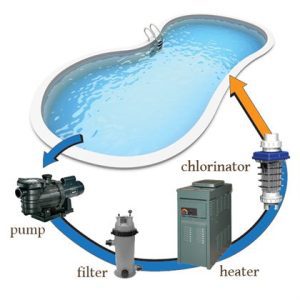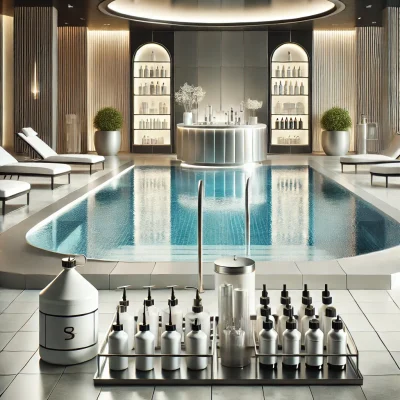Hottub, Swimming Pool
Managing Microbiological Hazards in Spa Pools: A Proactive Approach
Managing Microbiological Hazards in Spa Pools: A Proactive Approach
Spa pools, while offering relaxation and therapeutic benefits, can also pose risks related to microbiological hazards. Harmful bacteria, including Legionella, can thrive in spa environments if not managed carefully. This blog post will discuss how to proactively manage these risks, drawing on information from the Health and Safety Executive (HSE) document HSG282 [1, 7].
Sources of Microbiological Hazards
Microbiological hazards in spa pools typically originate from [7]:
- Bathers: Bathers introduce contaminants such as mucus, saliva, sweat, dead skin, suntan lotion, and urine into the spa [7].
- External Sources: The source water, atmosphere, and surrounding surfaces can all introduce microorganisms [7].
Common Microbiological Hazards
Several types of microorganisms can pose risks in spa pools [4, 8, 57, 58]:
- Legionella Species: Legionella pneumophila is the primary cause of Legionnaires’ disease. Other Legionella species can also cause illness [4, 57].
- Coliforms and Escherichia coli (E. coli): The presence of E. coli indicates faecal contamination and treatment failure. Coliforms can also indicate external contamination [59].
- Pseudomonas aeruginosa: This bacterium can cause folliculitis, a red rash caused by infection of hair follicles [60].
- Mycobacterium avium and other Mycobacterium species: These bacteria can cause respiratory illnesses [58].
- Other Infections: Amoebal, parasitic, gastrointestinal infections, furunculosis, and Molluscum contagiosum can also be contracted from poorly maintained spa pools [58].
Factors Influencing Microbial Growth
Several factors contribute to the growth of microorganisms in spa pools [4, 61]:
- Temperature: The ideal temperature range for Legionella and other bacteria is between 20–45°C [4, 61].
- Nutrients: Organic matter from bathers and the environment provide the nutrients for microbial growth [7, 61].
- Aerosols: The production of aerosols by spa jets can spread bacteria [5, 61].
Managing Microbiological Hazards
Effective management of microbiological hazards involves several key strategies [20]:
- Proper Design: The spa pool should be designed to minimize microbial growth [10, 62].
- Water Treatment: Use effective filtration and chemical disinfection to control microbial growth [45, 63].
- Regular Cleaning: Routine cleaning of the spa pool, balance tank, filters and surrounding areas is essential [16, 21].
- Water Replacement: Replace water at regular intervals to remove contaminants and avoid water stagnation [22].
- Monitoring: Test the water regularly for pH, disinfectant levels, and microbiological content [30].
Specific Actions
Here are some specific steps you can take to manage microbiological hazards [16]:
- Disinfection: Use appropriate disinfectants such as chlorine or bromine, and maintain appropriate levels [16, 64].
- Water Balance: Maintain a pH between 7.0-7.6, and ensure total dissolved solids (TDS) are no more than 1000mg/l higher than the fill water [29, 33].
- Bather Hygiene: Encourage users to shower before entering the pool and to avoid using sun tan lotions or skin creams [65, 66].
- Filter Maintenance: Regular backwashing or chemical cleaning, drying and replacement of filters is crucial [24, 25].
- Emergency Plan: Develop and implement an emergency plan to address situations where the spa pool becomes grossly contaminated [67, 68].
Key Takeaway
Managing microbiological hazards is critical for maintaining a safe spa pool. By combining diligent maintenance with regular monitoring, you can protect users from health risks associated with microbial contamination.
Keywords: Spa Microbiological Hazards, Hot Tub Bacteria, Legionella Control, Waterborne Diseases, Pool Safety, Spa Disinfection
FAQs
- What are the main sources of microbial contamination in spa pools?
- The main sources of contamination are bathers, external sources such as source water and the atmosphere [7].
- What are the most common bacteria found in spa pools?
- Legionella, coliforms, E. coli, and Pseudomonas aeruginosa are among the most commonly found bacteria [57, 59, 60].
- How can I control microbial growth in my spa pool?
- Ensure proper water treatment, including disinfection, regular cleaning, and frequent water replacement [16, 20, 22].
- What is the ideal temperature for microbial growth in spa pools?
- Microbes thrive in water temperatures between 20-45°C [4].
- What should I do if I suspect contamination?
- If contamination is suspected, close the spa pool immediately, thoroughly clean and disinfect and retest [39, 68].












